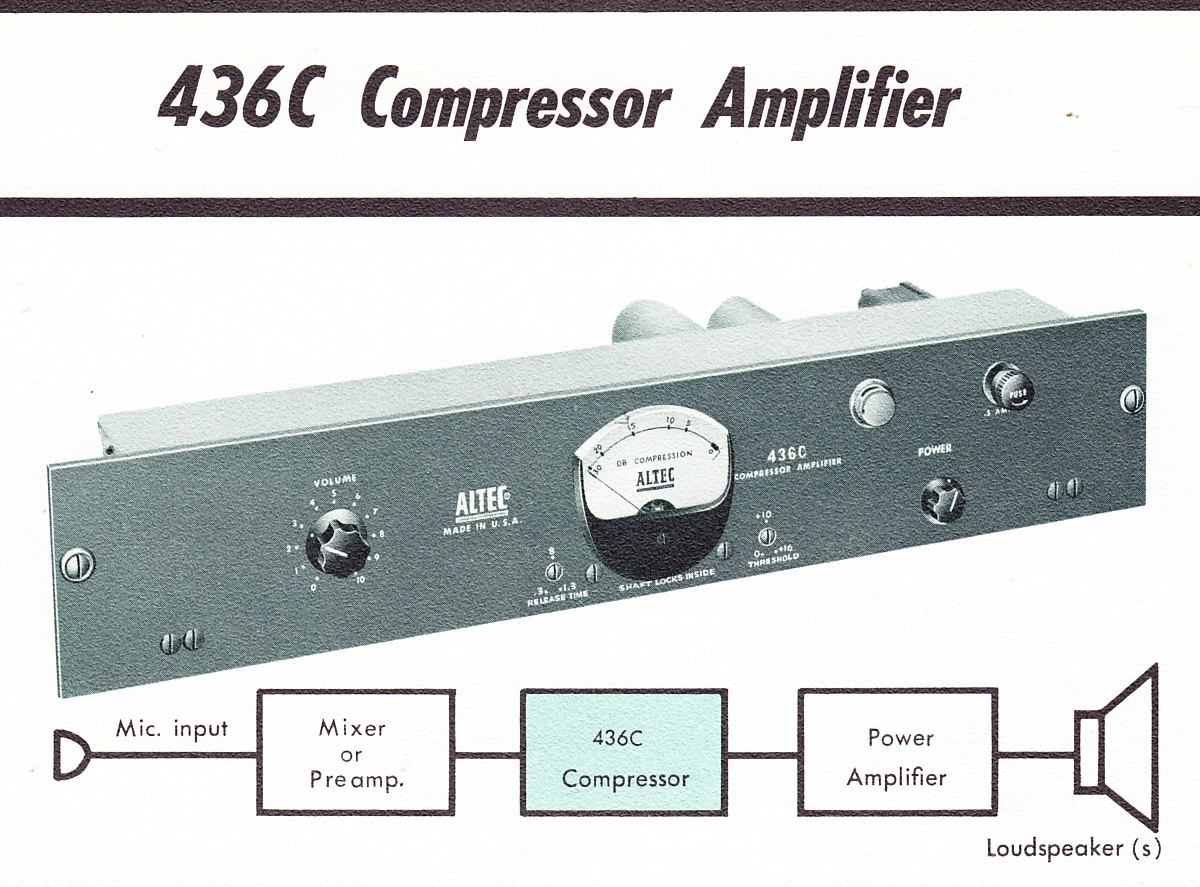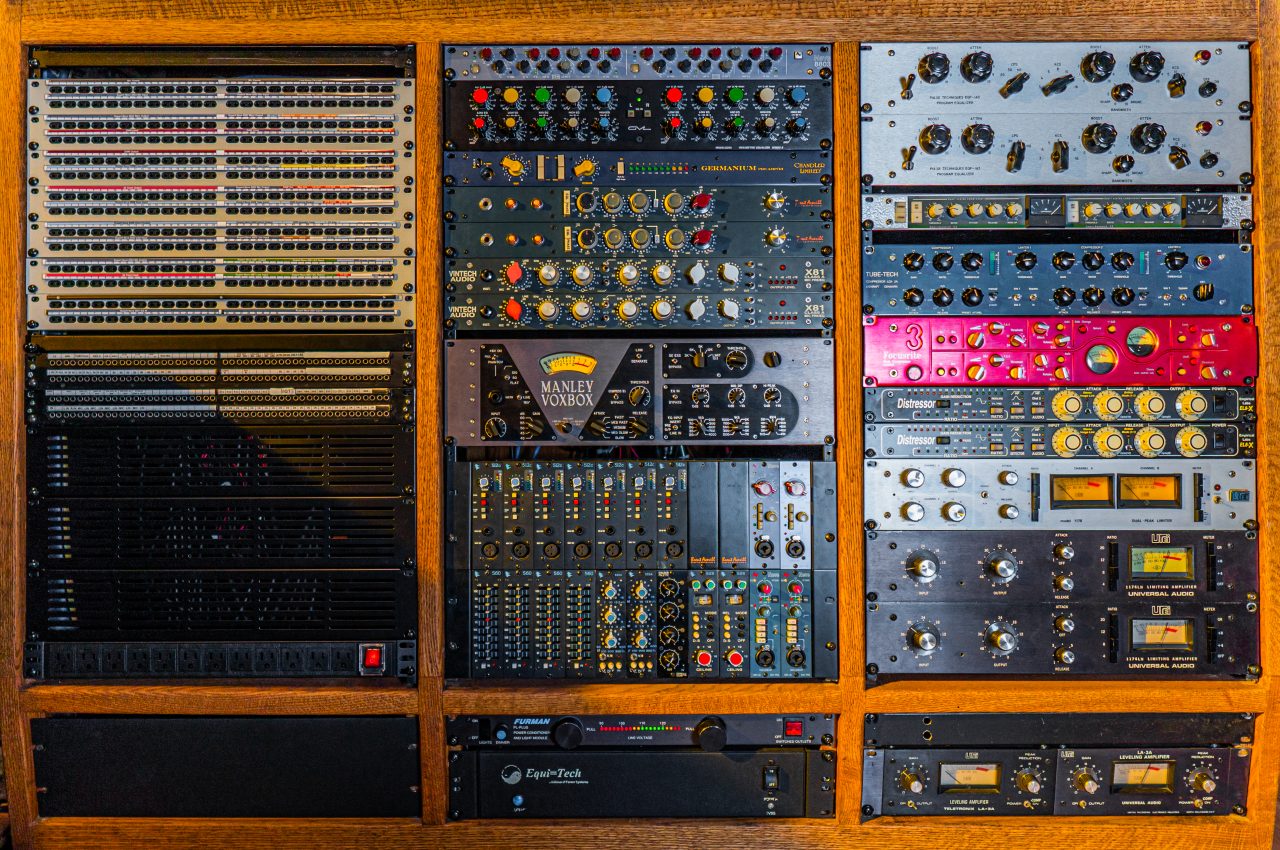Welcome back to the third of our four part series on Outboard Gear in STUDIO A. As I mentioned previously, STUDIO A has incredible outboard gear, and in this post we’re going to look at some of the dynamics processing units we have ready at our clients disposal. Specifically, the Smart Research C2 Compressor, the Empirical Labs Distressor, and the Altec 436C Tube Compressor. As a student, getting hands-on experience with this legendary outboard gear is one of the top reasons to take the Intermediate Recording Course with CSML.
If you’re already somewhat familiar with compressors this will seem a bit repetitive, but I’ll try my best to focus on the unique characteristics of these compressors. If you’re not familiar with the differences in Compressors, check out this article by iZotope. So, let’s get into it.
Smart Research C2 Compressor

First, the C2, perhaps one of the compressors I’ve seen in use most often in the studio. My CSML Instructor, Steve, will use this compressor to tame the stereo bus output of whatever we’re working on. He uses a very minimal amount of stereo compression, about 1dB of gain reduction, just enough to tame the peaks in a track.
The C2 houses two mono compressors, but when in Stereo mode, only the left hand controls are in use. The C2 is known for having a fast attack, but when delaying the attack it behaves like sidechain compression and adds punch to your transients. If you’re looking for an “overcompressed” sound, use the C2’s “Crush” mode. This is designed as FET compression, adding to and accentuating the characteristics produced by the unit itself.
Empirical Labs Distressor

Next, is one of my favorite units; this one is a beast. The Empirical Labs Distressor, a modern classic, has been used by engineers and artists alike from George Massenburg to Steve Vai. The Distressor was released in the mid 1990s, and has been adopted into countless studios worldwide. A prominent engineer has said that, “there probably was not a top 40 record made in the last five years that didn’t have at least one Distressor on it.”
“Digitally Controlled Analog Knee Compression,” the Distressor has eight unique compression curves designed to emulate classic compressors. The 1:1 mode will simply add warmth to your sound, whereas the “Nuke” setting is a brick wall that will make your drums come to life. You’ll find that each ratio has its own personality, and several use completely different circuitry. The 10:1, for instance, uses separate circuitry that emulates the classic LA-2A compressor. While the “British Mode” is built to emulate the classic UREI LN1176 limiter’s “all-in” ratio setting.
Beyond that, the Distressor utilizes unique Distortion Modes that add different colors and flare to your sound. The Dist 2 Mode emulates vintage compressors and emphasizes 2nd order harmonics, while the Dist 3 mode was created to emulate the classic Tape sound and emphasizes 3rd order harmonics. Needless to say, this unit is insane, and it’s practically impossible to achieve a bad sound. Try it out!
Altec 436C Tube Compressor

Lastly, I wanted to highlight the Altec 436C Tube Compressor. This unit is famous for being used in Abbey Road Studios during the Beatles era. The 436C is a variable gain compressor that was primarily designed to be used in television studios and public address systems, but found its way into the homes of thousands of recording studios.
It’s a simple unit, there is an input knob and that’s about it. You also have some control over threshold and release time. But the sound that comes from the 436C is smooth and sweet. It’s known for its heavy distortion once the compression really kicks into gear, yet it’s still capable of meeting modern standards.
I haven’t been able to use this one in the studio yet, but after doing some digging, I want to give it a try to see what this iconic compressor can do.
I’ve barely scratched the surface of our outboard compressors, but tune in next time to read more about some of our other outboard gear.
Written by Kyle Dean

